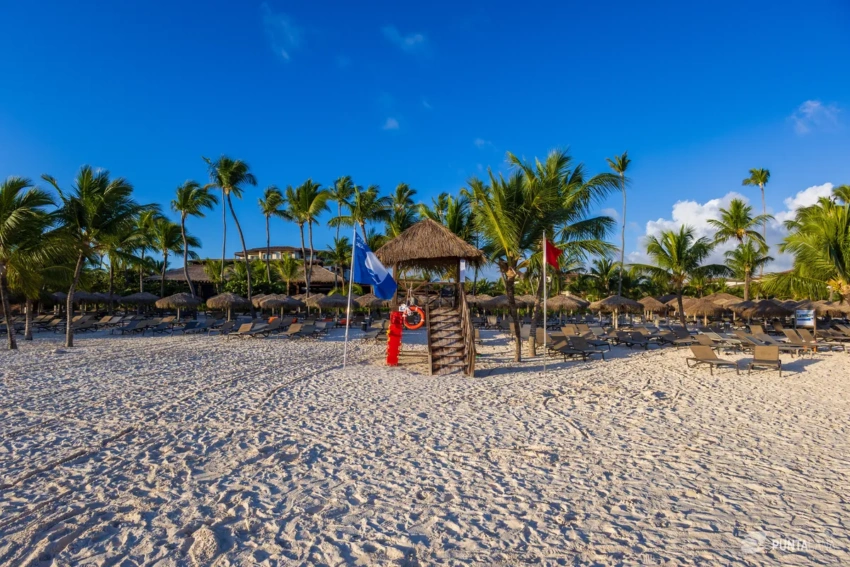Eco-Friendly Travel: Simple Ways to Minimize Your Environmental Impact
Understanding Eco-Friendly Travel

Eco-Friendly Travel: Simple Ways to Minimize Your Environmental Impact
In the modern era, as travel becomes more accessible and frequent, the need for eco-friendly travel practices has never been more critical. As travelers, understanding the impact of our journeys on the environment is the first step towards making a positive change.
1. What is Eco-Friendly Travel?
Eco-friendly travel, often referred to as sustainable or green travel, encompasses a range of practices aimed at reducing the negative impact of tourism on the environment. This approach includes everything from choosing sustainable modes of transportation to supporting environmentally conscious accommodations and engaging in activities that preserve and protect natural resources.
At its core, eco-friendly travel is about making mindful choices that promote conservation efforts and respect for local cultures and ecosystems. By adopting such practices, travelers contribute to the preservation of destinations for future generations while simultaneously enjoying a more authentic travel experience.
2. The Environmental Impact of Conventional Travel
Traditional travel methods, particularly air and car travel, have significant environmental repercussions. The aviation industry alone contributes to about 2% of global carbon emissions, with a single transatlantic flight emitting as much CO2 as the average person does in a year. This staggering figure highlights the urgent need to rethink our travel habits.
Beyond carbon emissions, conventional travel can lead to other forms of environmental degradation, such as air and water pollution, habitat destruction, and increased waste production. Mass tourism can put enormous pressure on local resources, leading to overuse of water, energy, and land, often at the expense of local communities and ecosystems.
3. Benefits of Sustainable Tourism
Embracing sustainable tourism offers a myriad of benefits that extend beyond environmental conservation. It fosters a symbiotic relationship between travelers and the destinations they visit, nurturing both cultural enrichment and ecological balance.
Sustainable tourism helps to minimize negative impacts on the environment by promoting responsible travel practices. This includes reducing waste, conserving water, and supporting conservation efforts. Moreover, it boosts local economies by directing funds towards community-led initiatives and small businesses, ensuring that tourism profits benefit local residents.
Choosing eco-friendly travel options also enhances the travel experience. Travelers often find themselves more immersed in local cultures, gaining unique insights and fostering meaningful connections with local communities. This leads to a deeper appreciation for the places visited and a greater understanding of the importance of preserving them.
Comparing Conventional and Eco-Friendly Travel
| Aspect | Conventional Travel | Eco-Friendly Travel |
|---|---|---|
| Carbon Emissions | High due to frequent air and car travel | Reduced by using public transport, biking, walking |
| Local Impact | Often negative, with mass tourism pressures | Positive, supporting local economies and cultures |
| Resource Use | High consumption of water and energy | Lower resource use with sustainable practices |
| Traveler Experience | Standardized, less cultural immersion | Authentic, enriched with local engagement |
Adopting eco-friendly travel practices enables travelers to enjoy a more meaningful journey while playing a vital role in protecting our planet. By understanding the nuances of sustainable tourism, we can all contribute to a healthier, more sustainable future for travel.
Choosing Sustainable Transportation
Choosing sustainable transportation is a pivotal step in eco-friendly travel. By prioritizing modes of transport that reduce carbon emissions, travelers can significantly minimize their environmental impact.

Aerial view of Punta Cana
1. Opt for Public Transportation
Public transportation is one of the most eco-friendly ways to travel, especially in urban settings. Buses, trains, subways, and trams are designed to carry large numbers of people, which means the carbon footprint per passenger is significantly lower compared to private vehicles. For instance, a single bus can replace approximately 30 individual cars on the road, reducing traffic congestion and emissions.
- Cost-Effective: Not only is using public transport environmentally beneficial, but it is also cost-effective. Travelers can save on fuel, parking, and tolls.
- Efficient Urban Travel: In many cities, public transport networks are extensive and provide a convenient way to explore without the stress of driving.
Comparison of Transportation Modes by Carbon Emission
| Transportation Mode | CO2 Emissions (kg per passenger/km) | Cost Efficiency | Availability |
|---|---|---|---|
| Bus | 0.089 | High | Widely Available |
| Train | 0.041 | Moderate | Varies by Region |
| Car (Single Driver) | 0.209 | Low | High |
| Airplane | 0.285 | Low | High |
2. Carpooling and Ridesharing
Carpooling and ridesharing are efficient methods to cut down on transportation emissions. By sharing rides with others, travelers can reduce the number of vehicles on the road, thereby lessening traffic congestion and pollution.
- Community Building: Sharing rides encourages interaction and networking among travelers and locals.
- Economic Benefits: Splitting costs like fuel and tolls makes travel more affordable.
Additionally, several apps and platforms facilitate easy carpooling and ridesharing, making it a convenient option for eco-conscious travelers.
3. Embrace Slow Travel
Slow travel emphasizes the journey rather than the destination, encouraging travelers to engage deeply with their surroundings. Walking or biking for short distances not only reduces carbon emissions but also offers numerous health benefits and a more immersive travel experience.
- Health Benefits: Walking and biking promote physical activity, which is beneficial for both mental and physical health.
- Cultural Immersion: Slow travel allows travelers to connect more profoundly with local cultures and environments.
For those planning longer journeys, consider taking scenic train routes or ferries that allow for a leisurely pace and stunning views, such as the famous Amtrak Coast Starlight route in the United States or the Norwegian Coastal Ferry.
The choice of sustainable transportation not only benefits the environment but also enhances the travel experience by fostering connections with local communities and landscapes.
Eco-Conscious Accommodation Choices
As travelers become increasingly aware of their environmental impact, making eco-conscious accommodation choices has emerged as a significant aspect of sustainable tourism. Selecting environmentally friendly places to stay can greatly reduce your carbon footprint and support sustainable practices worldwide.

Punta Cana
1. Stay in Eco-Friendly Hotels
Choosing a hotel that prioritizes sustainability can have a profound impact on reducing your environmental footprint. Eco-friendly hotels often engage in practices such as energy conservation, waste reduction, and water-saving initiatives. When selecting a green hotel, look for certifications such as LEED (Leadership in Energy and Environmental Design) or Green Key, which indicate a commitment to sustainability.
These hotels might employ energy-efficient lighting, utilize renewable energy sources like solar power, and implement water-saving fixtures. Equally important are their waste management strategies, which may include recycling programs and composting facilities. By staying at eco-friendly hotels, travelers support businesses that are actively working to minimize their impact on the planet.
Our Best Eco-Friendly Hotels in Punta Cana

New Bávaro Beach Beachfront Condo for Rent - Stunning Ocean View, Housekeeper & Rooftop Terrace
from $811 night Read more
Private Cap Cana Caleton Villa with Large Pool, Ocean View, and Top Amenities
from $3120 night Read more2. Consider Alternative Lodging Options
For those seeking a more immersive experience, alternative lodging options such as eco-lodges, camping, and agritourism offer unique opportunities to connect with nature. Eco-lodges are often located in breathtaking natural settings and constructed with sustainable materials. They focus on minimizing their ecological footprint while providing comfortable accommodations.
Camping is another excellent option for the environmentally conscious traveler. It allows you to experience the natural environment firsthand while adhering to the principles of “leave no trace.” Similarly, agritourism offers a chance to stay on working farms, providing insights into sustainable agricultural practices while supporting local farmers.
3. Support Local and Green Businesses
Staying in accommodations that prioritize local and sustainable practices not only benefits the environment but also supports local economies. By choosing to stay with businesses that source materials and food locally, you contribute to the community’s financial health and promote sustainable tourism.
When researching accommodations, look for those that engage with their local community through employment, sourcing, and collaboration. These businesses often have a visible commitment to reducing their carbon footprint and enhancing the surrounding environment. Supporting them ensures that your travel dollars are used to foster sustainable growth in the area.
By making informed choices about where you stay, you can significantly decrease your travel’s environmental impact. Eco-conscious accommodations not only offer sustainable living options but also enhance your travel experience through unique and meaningful connections with nature and local communities.
Sustainable Packing and Products
Embracing sustainable packing practices is a pivotal step in minimizing the environmental impact of your travels. By making mindful choices about what and how we pack, we can significantly reduce waste and our carbon footprint.
1. Pack Light and Smart
Packing light is not just a convenience for the traveler but also a meaningful approach to reducing carbon emissions. The weight of luggage directly impacts fuel consumption, especially in air travel, where every pound counts. To pack smartly, prioritize multi-purpose clothing that can be worn in multiple settings. Opt for neutral colors and lightweight materials that can be layered, which allows for versatility without the bulk.
Implementing a packing checklist can ensure you only bring essential items, thereby reducing the temptation to overpack. Additionally, consider using packing cubes to organize your belongings efficiently, maximizing space and minimizing excess baggage.
2. Choose Eco-Friendly Travel Gear
Selecting sustainable travel gear is an integral part of eco-friendly travel. Seek out products made from recycled or renewable materials. Brands like Patagonia and Ternua lead the way in providing high-quality, environmentally conscious options, offering everything from backpacks to clothing crafted with sustainability in mind.
Top Eco-Friendly Travel Gear Brands
| Brand | Product Range | Sustainability Features | Website |
|---|---|---|---|
| Patagonia | Clothing, Backpacks | Recycled Materials, Fair Trade | Visit |
| Ternua | Outdoor Gear | Organic Cotton, Recycled Fabrics | Visit |
| Osprey | Backpacks | Bluesign® Approved Fabrics | Visit |
Furthermore, reusable items such as water bottles, cutlery, and shopping bags can greatly minimize waste during your travels. These items not only reduce the dependency on single-use plastics but also contribute to a cleaner environment by lowering the amount of trash generated.
3. Reduce, Reuse, Recycle on the Road
While traveling, it’s crucial to maintain the principles of reducing, reusing, and recycling. Start by bringing a reusable water bottle and refill it as needed, which helps avoid purchasing single-use plastic bottles. Most airports and travel destinations now have refill stations, making it easier than ever to stay hydrated sustainably.
When it comes to waste management, familiarize yourself with recycling practices at your destination. Different countries have varying systems, so understanding these can help you dispose of waste responsibly. Additionally, carrying a small reusable bag for trash can ensure you leave natural sites as pristine as you found them.
By incorporating these sustainable packing habits, travelers can lessen their environmental impact, contributing to the preservation of beautiful destinations for future generations. Remember, every small effort counts in the journey toward a more sustainable world.
Mindful Activities and Consumption
Traveling can be a transformative experience, but it doesn’t have to come at the expense of the environment. By engaging in mindful activities and consumption, travelers can enjoy their journeys while minimizing their ecological footprint.
1. Participate in Eco-Friendly Activities
Engaging in eco-friendly activities is a fulfilling way to explore a new destination while contributing to environmental conservation. These activities not only offer unique experiences but also help protect the planet for future generations.
- Nature Walks and Hikes: Opt for guided nature walks or hikes in protected areas to learn about local ecosystems and support conservation efforts. Many national parks offer eco-tours that educate visitors on the importance of biodiversity.
- Volunteering: Consider dedicating some of your travel time to volunteer with local conservation projects. Whether it’s beach cleanups, tree planting, or wildlife monitoring, volunteering allows you to give back to the environment.
- Cultural Experiences: Engage in cultural activities that emphasize sustainable practices, such as traditional crafts or organic farming workshops.
A great resource for finding eco-friendly activities is the website Responsible Travel, which offers a variety of sustainable travel options worldwide.
2. Eat and Shop Locally
Eating and shopping locally not only provide a more authentic travel experience but also significantly reduce your environmental impact. Local products require less transportation, which means fewer carbon emissions.
- Local Cuisine: Dining at local restaurants that source their ingredients from nearby farms supports the local economy and reduces the carbon footprint associated with imported foods. Try to choose establishments that emphasize seasonal and organic produce.
- Farmers’ Markets: Visit farmers’ markets to enjoy fresh, local produce and unique handmade goods. This not only supports local artisans but also reduces packaging waste.
- Sustainable Souvenirs: Choose souvenirs that are made sustainably and reflect the local culture. Avoid items that contribute to environmental degradation, such as products made from endangered species or unsustainable resources.
Comparison of Local vs. Imported Products
| Aspect | Local Products | Imported Products |
|---|---|---|
| Carbon Footprint | Low (minimal transport) | High (extensive transport) |
| Economic Impact | Supports local economy | Supports external economies |
| Freshness and Quality | Generally fresher | May be less fresh due to transport |
| Environmental Impact | Lower packaging waste | Higher packaging waste |
3. Respect Wildlife and Nature
Interacting with wildlife and nature respectfully is crucial in preserving the natural beauty of travel destinations. Here are some guidelines to keep in mind:
Respect is key when it comes to wildlife and natural habitats. Disturbing the natural balance can have long-lasting negative effects on ecosystems.
- Keep Your Distance: Observe wildlife from a safe and respectful distance. Avoid feeding animals or attempting to touch them, as this can disrupt their natural behaviors.
- Leave No Trace: Follow the Leave No Trace principles by staying on designated paths, carrying out all trash, and leaving natural areas as you found them.
- Support Ethical Wildlife Encounters: Choose wildlife experiences that are ethical and conservation-focused. Avoid attractions that exploit animals for entertainment purposes.
Incorporating these mindful practices into your travels not only enhances your experience but also contributes to the preservation of our planet. As you plan your next adventure, consider how your choices can make a positive impact on the environment and local communities.
Offsetting Your Carbon Footprint
In an era where travel is more accessible than ever, taking measures to minimize one’s environmental impact is becoming increasingly essential. Offsetting your carbon footprint is a proactive approach to making your travels more sustainable.

Punta Cana
1. Understanding Carbon Offsets
Carbon offsets are a practical method for travelers to neutralize the carbon emissions generated from their trips. By investing in projects that reduce greenhouse gas emissions, travelers can effectively balance out the environmental impact caused by their transportation, accommodation, and activities. These projects can include reforestation, renewable energy, and energy efficiency initiatives, which contribute positively to the environment.
Carbon offsets work on the principle that emissions can be counteracted by reducing emissions elsewhere. This concept has gained traction among environmentally conscious travelers who recognize the necessity of sustainable practices in mitigating climate change.
2. Choosing Reputable Offset Programs
With numerous carbon offset programs available, selecting a reputable one is crucial to ensure your investment genuinely contributes to environmental sustainability. Look for programs that are transparent about their projects and have third-party verification from organizations like the Gold Standard or Verified Carbon Standard (VCS). These certifications assure that the offset projects meet high environmental and social standards.
Moreover, consider programs that offer detailed information about their initiatives, including the location, type of project, and the expected impact. A credible program will provide a comprehensive breakdown of how your contribution will make a difference.
3. Incorporate Offsetting into Travel Planning
Integrating carbon offsets into your travel planning can be seamless and rewarding. Begin by calculating your trip’s carbon emissions using online calculators provided by many offset organizations. These tools generally assess emissions based on flight distance, vehicle type, and accommodation choices.
Once you have an estimate, decide on the amount you wish to offset. Many programs offer flexible options, allowing you to offset a portion or the entirety of your emissions. Embracing this proactive approach not only mitigates your travel impact but also reinforces your commitment to environmental stewardship.
Our Eco-Conscious Villas in Punta Cana
For those planning a trip to Punta Cana, consider booking one of our eco-conscious villas. Designed with sustainability in mind, our properties offer a luxurious stay while minimizing your environmental footprint. Enjoy the beauty of nature without compromising on comfort.

Gorgeous Villa at Casa de Campo (La Romana) - With a Large Pool, Jacuzzi, Chef, Maid & 2 Golf Carts
from $1934 night Read more
One of the Best Caleton Villas in Cap Cana - Ocean View Villa for Rent with Chef, Maid, Butler & Pool
from $2746 night Read moreBy taking these steps to offset your carbon footprint, you not only enhance your travel experience but also contribute positively to the planet. Embrace the opportunity to travel sustainably, ensuring future generations can enjoy the wonders the world has to offer.
Frequently Asked Questions
What are some simple ways to reduce my carbon footprint while traveling?
Reducing your carbon footprint can be achieved by choosing eco-friendly transportation such as trains or buses, opting for direct flights to cut down on emissions, packing light, and using public transportation or walking once you reach your destination. Staying in accommodations that have sustainable practices can also make a significant difference.
How can I find eco-friendly accommodations?
Look for hotels or rentals that have green certifications like LEED or Green Key. These accommodations often have energy-saving measures, recycling programs, and water conservation policies. Additionally, reading reviews and checking the company’s sustainability initiatives on their website can provide insights into their environmental practices.
Is it possible to travel sustainably on a budget?
Yes, sustainable travel does not have to be expensive. Consider staying in hostels or eco-lodges, cooking your own meals with local ingredients, and using public transport. Many eco-friendly activities, like hiking or visiting parks, are low-cost or free. Planning and researching ahead can help you find affordable sustainable options.
How can I reduce waste when traveling?
To minimize waste, bring a reusable water bottle, utensils, and shopping bags. Avoid single-use plastics by choosing products with minimal packaging and participating in recycling programs. Additionally, say no to unnecessary items like paper receipts or disposable souvenirs.
What are some sustainable travel tips for international trips?
International travelers can minimize their impact by offsetting their carbon emissions through credible programs, learning about local customs to respect the environment, and supporting local businesses to boost the economy. It is also important to be mindful of cultural sites and natural habitats, ensuring they are left undisturbed.
Can flying be eco-friendly, or should it be avoided altogether?
While flying has a significant carbon footprint, there are ways to make it more eco-friendly. Choose airlines that invest in fuel-efficient technology, fly direct whenever possible, and pack light to reduce fuel consumption. Offsetting your carbon emissions through verified programs can also help mitigate the environmental impact.
How can I ensure my travel activities are sustainable?
Opt for activities that have minimal environmental impact, such as hiking, cycling, or kayaking. Support local eco-tours that focus on conservation and education. Ensure that any wildlife interactions are ethical and do not harm the animals or their habitats.
Why is supporting local economies important when traveling sustainably?
Supporting local economies ensures that your travel spending benefits the communities you visit. This can be done by purchasing goods from local vendors, eating at locally-owned restaurants, and choosing locally-operated tours. This approach not only reduces environmental impact but also contributes to the social and economic well-being of the area.
